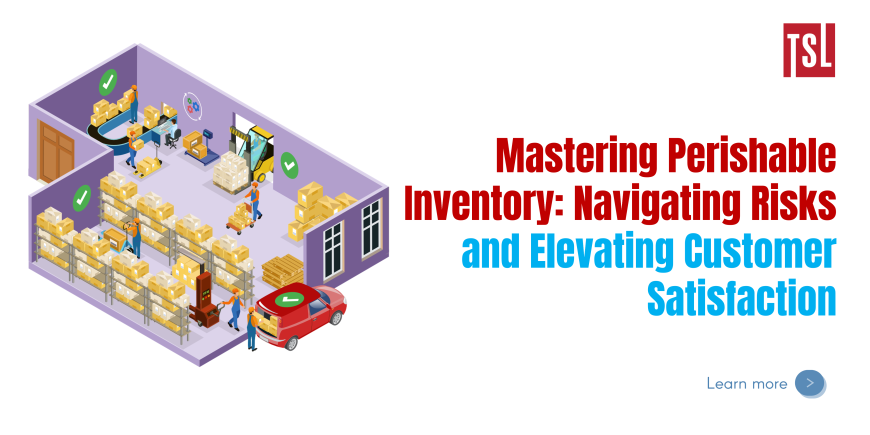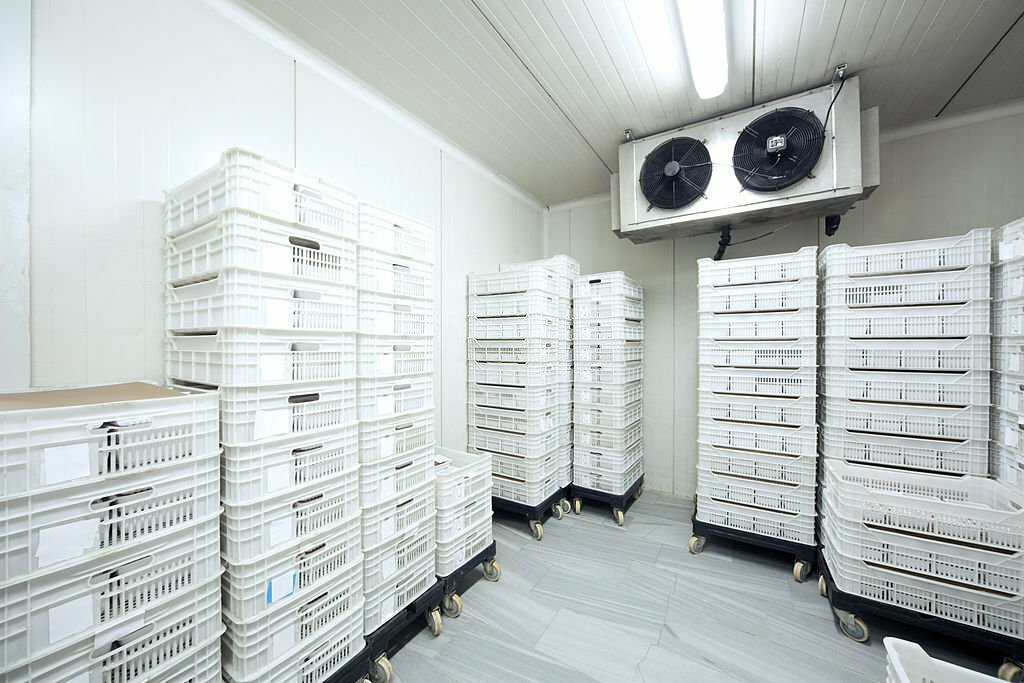Mastering Perishable Inventory: Navigating Risks and Elevating Customer Satisfaction in the Modern Era
Customer satisfaction is the cornerstone of success. This is particularly critical in specialized sectors like pharmaceuticals, food, and beverages (F&B), where ensuring product quality is a mandatory requirement to guarantee consumer safety.
In sectors where freshness and efficacy are critical, managing perishable inventory is no longer a routine task but a strategic imperative. Products with a limited shelf life are susceptible to damage if not stored and transported with precision. Hence, businesses must implement meticulous handling procedures to guarantee that goods reach customers in top condition.
This article takes a closer look at the various risks of managing perishable inventory, explaining the details that make it a high-stakes challenge. Plus, we explore smart solutions and best practices to cut down these risks, making sure businesses not only meet but go beyond what customers expect in a world where time is critical.
What Is a Short Shelf-Life Product?
A product with a short shelf-life has a specific time before it loses its suitability for use or consumption. Several elements, such as the product’s perishability, susceptibility to decomposition, or expiration dates, affect the shelf life.
Short shelf-life products like perishable foods, medicines, and cosmetics can spoil before expiration due to bacterial growth, chemical reactions, deterioration, potency loss, or changes in quality that render them unfit for their intended use.
The challenges with short shelf life products
- Loss of Quality
One of the primary risks associated with short shelf life products is the potential loss of quality. Exposure to unsuitable environmental conditions can cause changes in appearance, taste, and overall product integrity. For instance, food products may succumb to spoilage, while pharmaceuticals may lose their efficacy. This not only diminishes the value of the product but also poses risks to consumer health.
- Expiry Date Woes
The expiration date is a crucial aspect of short shelf life products, and any issues related to it can have severe consequences. Consuming products beyond their expiration date poses significant risks to consumers. As products age, their quality and safety can be compromised, leading to potential health hazards.
- Financial Loss
Ineffective inventory management of short shelf life products directly translates to financial loss for businesses. Products that have expired or experienced a decline in quality cannot be sold, leading to both lost revenue and increased waste. This not only impacts profits but also undermines the financial health of the business.
- Consequences for Customers
Perhaps the most critical challenge associated with short shelf life products is the potential harm to customer health. Consuming expired or compromised products can lead to a range of health issues, from mild discomfort to severe illnesses. This not only poses ethical concerns for businesses but can also result in legal consequences.
How can you improve inventory management for products with short shelf lives?
1. Know Your Demand Patterns: Forecast Demand for Better Inventory Planning
One of the first steps to improve your inventory management is to understand your demand patterns. You need to know how much, when, and where your customers buy your products, and how these factors vary by season, day of the week, or even hour of the day. You can use historical data, market research, and customer feedback and leverage AI and technology to analyze your demand patterns and forecast your future sales. This will help you plan your inventory levels and avoid overstocking or understocking your products.
2. Diverse System Repositories: Tailoring the Environment to Product Needs
Establishing an optimal storage environment is crucial to guarantee the durability and quality of diverse products. For instance, the implementation of cold storage is indispensable for items sensitive to temperature fluctuations, necessitating a controlled environment to uphold their quality and effectiveness. Conversely, products not reliant on specific temperature conditions can be stored in a cost-effective and practical dry warehouse. Furthermore, a moisture-proof warehouse is essential for products susceptible to moisture, particularly items like electronics or those with sensitive packaging, to prevent potential damage caused by moisture. By addressing specific requirements such as temperature and moisture sensitivity, businesses can extend the shelf life of their products.
3. Strict Control Process: Ensuring Accuracy and Timely Monitoring.
Regular and periodic inventory checks are essential for monitoring the status of products. Identifying items nearing their expiration date enables proactive measures to be taken, mitigating the risk of selling expired goods. Businesses can leverage barcode technology for precise inventory management. The implementation of barcode technology streamlines the control process, enhancing accuracy in identifying products and their respective expiration dates. This minimizes errors and improves efficiency in managing inventory with a short shelf life.
4. Handle Inventory Properly: Proactive Measures
The FIFO (first in, first out) method is a simple but effective way to manage your inventory for products with short shelf lives. It means that you sell or use the products that arrived or were produced first, before the ones that came later. This way, you minimize the risk of having expired or spoiled products in your inventory. You can implement the FIFO method by labeling your products with dates, organizing your storage space by batches, and rotating your stock regularly.
5. Modern Information System: Leveraging Technology for Efficiency
Invest in modern software solutions to revolutionize inventory management like warehouse management software, demand & fulfillment forecast solutions,…. These systems accurately provide demand forecasts, track inventory in real-time, issue timely warnings about product expirations, and optimize overall management processes. This technological integration is instrumental in staying ahead in the competitive landscape.
Conclusion
Mitigating inventory management risks for products with short shelf lives requires a multifaceted approach that includes diverse storage solutions, strict control processes, proactive inventory handling, and the adoption of modern information systems. By implementing these strategies, businesses can not only safeguard product quality but also optimize operational efficiency, reduce financial risks associated with expired inventory, and enhance overall customer satisfaction.
At TSL, we understand the intricate demands of modern inventory management. Our range of software solutions is designed to optimize inventory control, providing detailed real-time insights into inventory details, shelf life, and status. Through our demand and fulfillment management solutions, we empower businesses with accurate forecasts, aiding them in strategic inventory planning.
Furthermore, our barcode technology seamlessly integrates into Warehouse Management Systems (WMS), enhancing the precision and speed of inventory tracking. By choosing TSL, you’re not just investing in software; you’re investing in the future success of your business.
Take the next step towards elevating your inventory management practices. Contact us now for a free consultation. Let us tailor a solution that fits your unique business needs, ensuring that your inventory processes are not just efficient but also future-proofed in the dynamic landscape of modern business.











